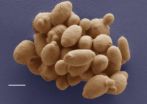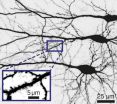(Press-News.org) Take the sound "bl": how many words starting with that sound can you think of? Blouse, blue, bland... Now try with "lb": how many can you find? None in English and Italian, and even in other languages such words either don't exist or are extremely rare. Human languages offer several examples of this kind, and this indicates that in forming words we tend to prefer certain sound combinations to others, irrespective of which language we speak. The fact that this occurs across languages has prompted linguists to hypothesize the existence of biological bases of language (inborn and universal) which precede language learning in humans. Finding evidence to support this hypothesis is, however, far from easy and the debate between the proponents of this view and those who believe that language is merely the result of learning is still open. But proof supporting the "universalist" hypothesis has now been provided by a new study conducted by a research team of the International School for Advanced Studies (SISSA) in Trieste and just published in the journal PNAS.
David Gomez, a SISSA research scientist working under the supervision of Jacques Mehler and first author of the paper, and his co-workers decided to observe the brain activity of newborns. "In fact, if it is possible to demonstrate that these preferences are already present within days from birth, when the newborn baby is still unable to speak and presumably has very limited language knowledge, then we can infer that there is an inborn bias that prefers certain words to others", comments Gomez.
"To monitor the newborns' brain activity we used a non-invasive technique, i.e., functional near-infrared spectroscopy", explains Marina Nespor, a SISSA neuroscientist who participated in the study. During the experiments the newborns would listen to words starting with normally "preferred" sounds (like "bl") and others with uncommon sounds ("lb"). "What we found was that the newborns' brains reacted in a significantly different manner to the two types of sound" continues Nespor.
"The brain regions that are activated while the newborns are listening react differently in the two cases", comments Gomez, "and reflect the preferences observed across languages, as well as the behavioural responses recorded in similar experiments carried out in adults".
"It's difficult to imagine what languages would sound like if humans didn't share a common knowledge base", concludes Gomez. "We are lucky that this common base exists. This way, our children are born with an ability to distinguish words from "non-words" ever since birth, regardless of which language they will then go on to learn".
INFORMATION:
In addition to Gomez, Mehler and Nespor, the SISSA team that took part in this study also includes Silvia Benavides-Varela. The study was carried out in co-operation with the Northeastern University of Boston and the Santa Maria della Misericordia Hospital of Udine.
Universal syllables
Some innate preferences shape the sound of words from birth
2014-04-01
ELSE PRESS RELEASES FROM THIS DATE:
1.1 million Americans caring for recently wounded veterans, study finds
2014-04-01
More than 1.1 million spouses, parents and friends are caring for the injured and disabled who have served in the U.S. military since Sept. 11, 2001, often doing so without a formal support network and putting their own well-being at risk, according to a new RAND Corporation study.
The largest-ever study of military caregivers -- commissioned by the Elizabeth Dole Foundation -- finds that Americans who are taking care of veterans who served after 9/11 are younger than other caregivers, are usually employed outside the home and are more likely to care for someone who has ...
Customers prefer restaurants that offer nutrition facts and healthful foods
2014-04-01
Customers are more likely to frequent restaurants that provide both healthful foods and nutrition information, according to researchers at Penn State and the University of Tennessee.
"The Affordable Care Act has mandated that chain restaurants -- those with more than 20 restaurants -- provide nutrition information to customers," said David Cranage, associate professor of hospitality management. "Many restaurants had been fighting this legislation because they thought they would lose customers if the customers knew how unhealthy their food was. In this study, we found ...
New yeast species travelled the globe with a little help from the beetles
2014-04-01
Researchers from the National Collection of Yeast Cultures (NCYC) at the Institute of Food Research (IFR) have identified a new globe-trotting yeast species that lives on tree-associated beetles. This new species demonstrates the importance of preserving biodiversity, as yeasts like this may help efforts to develop renewable fuel sources in the future.
Preserving biodiversity must go beyond plants and animals and also preserve the microbial life. Threats to habitats, for example through oil exploration, could destroy forever potential solutions to global challenges locked ...
Simple changes in ICU can help heart attack patients: Study
2014-04-01
To improve recovery for heart attack patients, hospitals should maintain normal day and night cycles for those patients during the first few days after the attack, say University of Guelph researchers.
Their new study shows for the first time that interrupting diurnal rhythms impairs healing immediately after a heart attack, said Prof. Tami Martino of the Department of Biomedical Sciences.
Researchers already knew that circadian rhythms, or day-night cycles, can affect timing of a heart attack. This is the first study to show the importance of circadian rhythms during ...
Dog watch
2014-04-01
Dogs are individual personalities, possess awareness, and are particularly known for their learning capabilities, or trainability. To learn successfully, they must display a sufficient quantity of attention and concentration. However, the attentiveness of dogs' changes in the course of their lives, as it does in humans. The lead author Lisa Wallis and her colleagues investigated 145 Border Collies aged 6 months to 14 years in the Clever Dog Lab at the Vetmeduni Vienna and determined, for the first time, how attentiveness changes in the entire course of a dog's life using ...
Experts demand lead ammunition be replaced by steel in shooting sports
2014-04-01
Raimon Guitart, lecturer in Toxicology at the UAB, and Vernon Thomas, emeritus professor of the University of Guelph, analysed in detail the environmental effects of using lead ammunition in shooting sports, in an article published in the AMBIO journal. Although the number of Olympic athletes specialising in these sports is reduced, and the ammunition is recovered and recycled after the competitions, there are many amateurs who practice this sport around the world, making it almost impossible to recover the ammunition after being used.
Researchers show that for these ...
Carbon nanotubes grow in combustion flames
2014-04-01
Nagoya, Japan – Professor Stephan Irle of the Institute of Transformative Bio-Molecules (WPI-ITbM) at Nagoya University and co-workers at Kyoto University, Oak Ridge National Lab (ORNL), and Chinese research institutions have revealed through theoretical simulations that the molecular mechanism of carbon nanotube (CNT) growth and hydrocarbon combustion actually share many similarities. In studies using acetylene molecules (ethyne; C2H2, a molecule containing a triple bond between two carbon atoms) as feedstock, the ethynyl radical (C2H), a highly reactive molecular intermediate ...
Early intervention reduces aggressive behavior in adulthood
2014-04-01
An educational intervention program for children between kindergarten and 10th grade, known as Fast Track, reduces aggressive behavior later in life, according to research published in Psychological Science, a journal of the Association for Psychological Science.
The research, led by psychological scientist Justin Carré of Nipissing University in Ontario, Canada, indicates that dampened testosterone levels in response to social threats may account for the intervention's success in reducing aggression.
The Fast Track intervention program teaches children social cognitive ...
Team finds a better way to grow motor neurons from stem cells
2014-04-01
CHAMPAIGN, Ill. — Researchers report they can generate human motor neurons from stem cells much more quickly and efficiently than previous methods allowed. The finding, described in Nature Communications, will aid efforts to model human motor neuron development, and to understand and treat spinal cord injuries and motor neuron diseases such as amyotrophic lateral sclerosis (ALS).
The new method involves adding critical signaling molecules to precursor cells a few days earlier than previous methods specified. This increases the proportion of healthy motor neurons derived ...
Science: Switching brain cells with less light
2014-04-01
This news release is available in German. Networked nerve cells are the control center of organisms. In a nematode, 300 nerve cells are sufficient to initiate complex behavior. To understand the properties of the networks, re-searchers switch cells on and off with light and observe the resulting behavior of the organism. In the Science journal, sci-entists now present a protein that facilitates the control of nerve cells by light. It might be used as a basis of studies of diseases of the nervous system. DOI: 10.1126/science.1249375
To switch a nerve cell with light, ...
LAST 30 PRESS RELEASES:
Tracing the quick synthesis of an industrially important catalyst
New software sheds light on cancer’s hidden genetic networks
UT Health San Antonio awarded $3 million in CPRIT grants to bolster cancer research and prevention efforts in South Texas
Third symposium spotlights global challenge of new contaminants in China’s fight against pollution
From straw to soil harmony: International team reveals how biochar supercharges carbon-smart farming
Myeloma: How AI is redrawing the map of cancer care
Manhattan E. Charurat, Ph.D., MHS invested as the Homer and Martha Gudelsky Distinguished Professor in Medicine at the University of Maryland School of Medicine
Insilico Medicine’s Pharma.AI Q4 Winter Launch Recap: Revolutionizing drug discovery with cutting-edge AI innovations, accelerating the path to pharmaceutical superintelligence
Nanoplastics have diet-dependent impacts on digestive system health
Brain neuron death occurs throughout life and increases with age, a natural human protein drug may halt neuron death in Alzheimer’s disease
SPIE and CLP announce the recipients of the 2025 Advanced Photonics Young Innovator Award
Lessons from the Caldor Fire’s Christmas Valley ‘Miracle’
Ant societies rose by trading individual protection for collective power
Research reveals how ancient viral DNA shapes early embryonic development
A molecular gatekeeper that controls protein synthesis
New ‘cloaking device’ concept to shield sensitive tech from magnetic fields
Researchers show impact of mountain building and climate change on alpine biodiversity
Study models the transition from Neanderthals to modern humans in Europe
University of Phoenix College of Doctoral Studies releases white paper on AI-driven skilling to reduce burnout and restore worker autonomy
AIs fail at the game of visual “telephone”
The levers for a sustainable food system
Potential changes in US homelessness by ending federal support for housing first programs
Vulnerability of large language models to prompt injection when providing medical advice
Researchers develop new system for high-energy-density, long-life, multi-electron transfer bromine-based flow batteries
Ending federal support for housing first programs could increase U.S. homelessness by 5% in one year, new JAMA study finds
New research uncovers molecular ‘safety switch’ shielding cancers from immune attack
Bacteria resisting viral infection can still sink carbon to ocean floor
Younger biological age may increase depression risk in older women during COVID-19
Bharat Innovates 2026 National Basecamp Showcases India’s Most Promising Deep-Tech Ventures
Here’s what determines whether your income level rises or falls
[Press-News.org] Universal syllablesSome innate preferences shape the sound of words from birth




